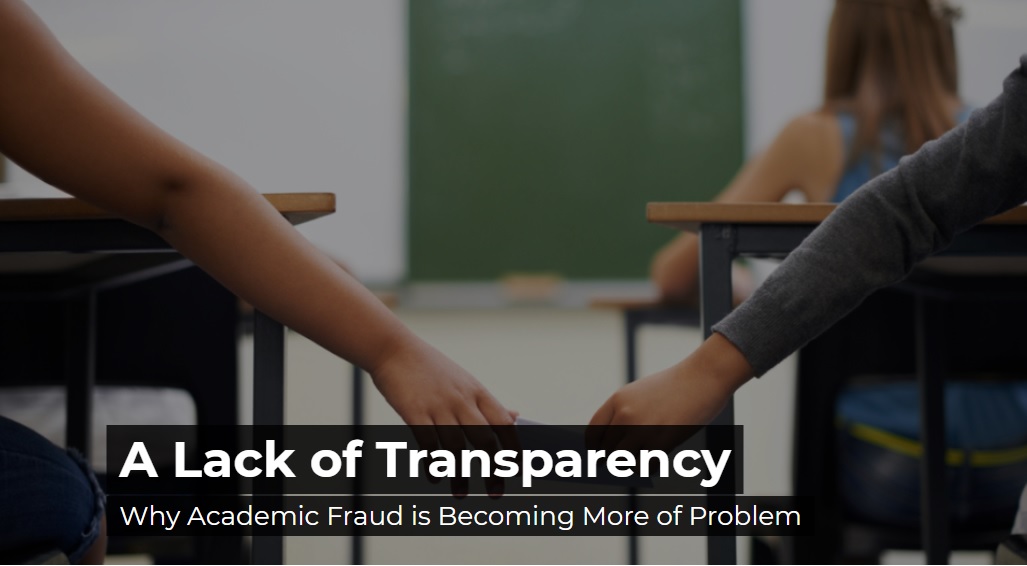A Lack of Transparency: Why Academic Fraud Is Becoming More of Problem

Students cheat and plagiarize more if they believe most of their classmates to do the same. A recent study by Evgeniia Shmeleva and Tatiana Semenova, experts at the IOE Center for Sociology of Higher Education, looks at how factors of learning environment, and specifically the way students perceive the stance towards dishonest practices that their peers espouse, act as modulators of academic dishonesty.
The Propagation of Deceit
Downloading papers from the internet, attempts to hand in papers prepared by other students as one’s own, using cheat sheets during exams and many other manifestations of dishonesty on university grounds are often attributed to the unwillingness to study. Students do not want to spend time and effort on preparation and would rather cheat.
Meanwhile, the reason why students are dishonest in class lies not only in low motivation, but in the nature of students’ educational environment, Evgeniia Shmeleva and Tatiana Semenova, researchers at the IOE Center for Sociology of Higher Education argue.
Educational environment is invariably a complex matrix of behavioral patterns of classmates and teachers, such as, in particular, their tolerance of academic dishonesty. Students cheat more if they believe that many of their classmates do it, too. And even the likelihood that a due comeuppance will follow is not always considered.
Academic dishonesty specifically proliferates in environments that lack transparency, according to a longitudinal study that involved over 900 students enrolled in various programs at four Russian universities. Students were surveyed twice: at the beginning of their first year and at the end of their second year of studies.
Not Allowed. But You Can Do It.
The study has revealed that:
- On the one hand, the majority of students (over 80%) admit that plagiarism and cheating are unacceptable.
- On the other hand, the situation is different in reality. Half of the respondents said that even during their first year of studies, they cheated at least once (most often, they copied from another student).
- At the same time, many were aware of the risks of punishment for academic fraud.
However, the threat of punishment obviously does not produce as significant an effect. If it deters students from using cheat sheets on exams, then it does not scare them off from committing plagiarism. Students plagiarize regardless of the risk of punishment. And they see it as a common practice.
Every third respondent believes that most of their classmates cheat and plagiarize.
This data resonates widely with what other research has shown. For example, in a study conducted among students of economics and management at eight Russian universities, one in six respondents believed that they can pass most exams by cheating, while over a third indicated that their classmates downloaded papers from the internet.
Eventually, students get used more and more to such behavioral patterns. Notably, ‘experienced’ students are more tolerant to academic fraud than freshmen.
Reasons for Fraud
The research has pointed to many factors that can amplify academic dishonesty:
- For example, Russian students often believe fraud to be justifiable. Some think that it is easier to cheat than to spend time on studying for a test. Others explain copying as mutual help: why not help your friend on an exam?
- Students who cheat in school often cheat at university.
- Sometimes universities, particularly small local ones, are confronted with cuts in funding if they expel students. They have to retain even those who are reluctant to study.
- Universities and teachers are not always consistent in punishing academic fraud. And the Russian society in general often takes a relaxed attitude towards cheating.
Undoubtedly, students’ motivation to study also impacts the level of honesty. While some students are interested in gaining knowledge and working hard, others confine themselves to only demonstrating their abilities (or concealing a lack of them) to get a good grade. These students cheat more.
A student’s environment—namely, their classmates—is also an important factor. Data from international studies demonstrate that the probability of dishonesty is higher among students who believe this practice to be common among their peers.
Plagiarism: with Reproach, but without Fear
This manifestation of dishonesty is most closely linked with how a student perceives the stance towards academic fraud that their peers take, Evgeniia Shmeleva and Tatiana Semenova show.
Students are more likely to commit plagiarism if they believe that most of their peers do the same.
Meanwhile, the likely repercussion of committing plagiarism is often ignored. The variables characterizing students’ perception of the possibility that their papers would be checked for plagiarism and the possibility of punishment turned out to be insignificant.
The authors say that, probably, the experience of looking at other students who cheated and avoided punishment turns out to outweigh the fear of comeuppance. Sometimes teachers do not notice plagiarism. Yet, unlike when it comes to cheating, the situation with plagiarism is better regulated at the university level.
This type of fraud is also correlated with one’s assessment of his or her own performance. Low-performing students copy papers more often than their peers with higher academic achievement.
Dishonesty as a Common Occurrence
One’s perception of his or her peers’ behavior also impacts cheating. Students who believe that others also do it are likely to cheat more.
Yet, unlike in case with plagiarism, the frequency of this type of fraud is also correlated with teachers’ behavior. The higher the probability of due punishment is, the lower the risks of this kind of fraud are. Unlike with plagiarism, the frequency of copying does not vary across universities. At that, how frequently this type of dishonesty occurs is also correlated with one’s academic performance: lower-achievers tend to resort to cheating more often.
Tatiana Semenova